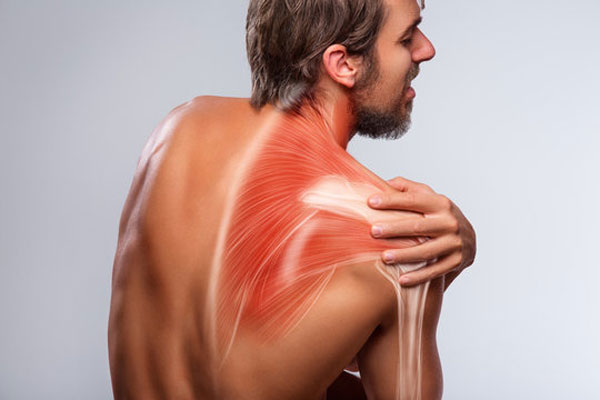Shoulder Tendonitis
A group of fibers, when twisted together, form a rope that is versatile and has diverse functions in our daily lives. Similarly, our bodies contain tough, fibrous collagen bands called tendons that attach muscles to the bones. Any injury or overuse of the tendons results in pain and inflammation of the tendon. This condition is known as tendonitis.
Shoulder tendonitis refers to inflammation of the rotator cuff or biceps tendons. The stability of the shoulder joint is maintained with the help of rotator cuff muscles and tendons. They help hold the head of the upper arm bone tightly in the shoulder socket.

What are the types of shoulder tendonitis
The common symptoms of shoulder tendonitis include:
- Pain or tenderness in your shoulder
- Difficulty in holding your arm in certain positions
- Pain while moving your arm or while trying to reach behind your back
- Stiffness
- Clicking sound while moving an arm
- Weakness in the arm
However, the symptoms may vary from person to person depending on the severity of the condition.
What are the causes of shoulder tendonitis?
The causes for shoulder tendonitis may include:
- Sudden trauma resulting from sports injuries or accidents.
- Improper technique or posture while playing sports.
- Falling on your outstretched arm.
-
Repetitive use tendons may also lead to tendonitis. Examples include:
- Sports such as baseball, tennis, golf, swimming
- Repetitive household activities
- Occupational activities, such as lifting heavy weights, heavy overhead pressing etc.
Shoulder tendonitis may also occur due to an unknown cause. As people grow older, the flexibility of their tendons decreases, making them more vulnerable to tendonitis.
How is shoulder tendonitis diagnosed?
The diagnosis for shoulder tendonitis usually involves reviewing the medical history and a physical examination.
- Medical history: Your physician may obtain the details about your symptoms, like pain, its location, and the situations during which it is intensified.
- Physical Examination: During a physical examination, the physician may check for areas of tenderness in your shoulder. He may also look for any visual deformities present in the shoulder. In an attempt to measure the mobility of your arm, your physician may move your arm in different directions. He or she may also check how well you can push his hand in order to assess the strength of your arm.
Other tests that may be recommended to aid in the process of diagnosis may include:
- X-ray: X-rays uses electromagnetic energy beams to obtain images of dense structures like bones. This test is recommended to rule out other conditions like arthritis or fractures.
- Magnetic Resonance Imaging (MRI): Detailed images of the soft tissues or organs are obtained by using MRI. They are useful in reveling inflammation in the rotator cuff or bursa (fluid filled sac). They also determine the tears that may cause inflammation.
- Ultrasonography: Shoulder ultrasound is also useful in assessing rotator cuff tear. It can also be helpful in providing real-time diagnosis that helps in assessing your tissues while you move your shoulder.
What are the treatment options for shoulder tendonitis?
The primary goal of the treatment is to relieve symptoms and regain strength and mobility of the shoulder. There are various treatment options that can be recommended based on your
- Age
- Overall health
- Severity of the condition
- Personal goals and preferences
The common line of treatment for minor shoulder tendonitis includes:
- Rest: Giving proper rest to the affected shoulder is a prior step towards treatment. It is important to avoid activities that may further irritate the tendons in your shoulder.
- Medications: Non-steroidal anti-inflammatory drugs (NSAIDs) like ibuprofen and naproxen helps in reducing pain and inflammation.
- Physical therapy: Physical therapy involves stretching and muscle strengthening exercises to restore the movement of your shoulder. However, these exercises must be planned and done as suggested by your physiotherapist.
- Injections: When painkillers and physical therapy fail to relieve pain then steroid injections are prescribed. They are injected directly into the affected site to reduce the pain and inflammation effectively.
-
Surgery: Surgery is an option when your rotator cuff or biceps tendons are partially or completely torn due to an accident or injury. It can either be performed through small incisions (arthroscopy) or through a large incision (open surgery). Depending on the requirement, the surgery usually involves
- Repairing the damaged tendons
- Removing the inflamed portion of the bursa
- Removing a part of the acromion (top bone of the shoulder)
How can we prevent shoulder tendonitis?
Repetitive movements of the tendons is the common cause of shoulder tendonitis, which can be prevented by:
- Avoiding activities that cause discomfort of shoulder.
- Modifying certain activities that are unavoidable at your workplace.
- Asking a professional trainer about the right posture and technique if involved in sports that demand repetitive movements.
- Practicing stretching exercises regularly before and after your activities.
